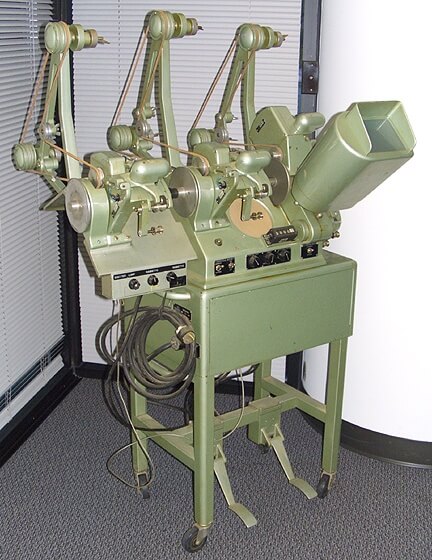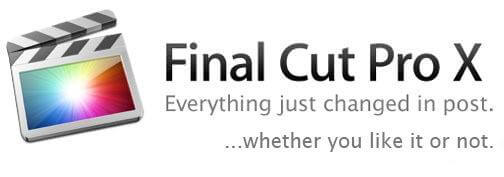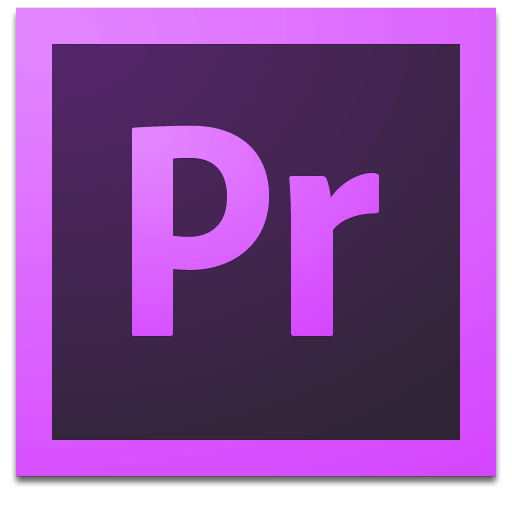In the 20 years that I’ve been cutting film and video, I’ve had my hands in just about every possible flavor of editing that you can imagine. As a teenager my first forays were with the dreaded linear, tape-to-tape 1/2-inch setup, consisting of a couple of S-VHS decks, monitors and (if I was lucky) an Amiga with VideoToaster (cube wipes!).
In college, I learned to edit 16mm film on a Steenbeck and spent my summers as an intern at Cinema Concepts here in Atlanta, breaking down 35mm prints into 30-second trailers and checking them on a Moviola. Towards the end of my college career, I learned my first non-linear editing (NLE) software: Avid Media Composer.
When I graduated I started to freelance and immediately saw that Apple had a business model that was really targeted towards the little guy: powerful software that ran on off-the-shelf hardware and had a (fairly) affordable price point. Despite having a basic working proficiency with Avid, I took out a loan to buy my first Mac (a completely badass dual-core G4 Quicksilver that I still own) and a copy of Final Cut Pro 2 (FCP).
FCP was the first editing software that I learned inside and out, and it enabled me to start making real money as a freelance video editor. Not long after I got my chops, I ended up getting a full-time gig at a TV channel that was all Avid. I continued to freelance using FCP, but was forced to get up to the same level of skill with Avid. Pretty soon I was able to move between the two fairly effortlessly. I fell in love with the way Avid managed media (something FCP sucks at) but always preferred Final Cut’s user interface.
Both had their strengths and weaknesses, but between the two they seemed to encompass the entirety of the professional market. I was aware of Adobe Premiere, but I didn’t think much of it. It seemed like a prosumer product at best, and there seemed to be a strange obsession with horses (see photo). Media100 was already on its way out, and I’m still not sure I’ve ever met a live person who actually edits with Sony Vegas (but they sure seem to buy a lot of magazine ads).
When it came time to start ECG, we initially ran both FCP and Avid, and had both PC and Mac-based edit suites. However, it wasn’t long before we switched to a purely Final Cut shop. This was largely because of the huge disparity in cost per suite and the fact that Apple seemed to be incredibly plugged into their user base. They frequently improved and expanded their product based on what real world professionals were asking for, and even eventually added the full Final Cut Studio suite of programs at essentially the same price we were already used to paying for FCP alone.
Remember that bit about Apple paying attention to their user base, it’ll be important later.
As ECG hit its stride, FCP seemed like it was going to be our NLE of choice forever. We sold our last PC Media Composer suite and even bought an AJA ioHD (a hardware i/o box that only works with FCP) to handle the higher volume of ProRes based work we were doing.
Cut to 5 years later. The Apple that seemed so focused on the professional video editing market shocked us all by not delivering the 64-bit powerhouse “Version 8” we were all salivating for, but rather Final Cut Pro X, which was essentially a kick to the groin in software form. Now I know there are some folks out there (somewhere) who think that FCP X is the bees knees and totally revolutionary, etc.
I gave it a fair shot, I really did. I installed a copy and tried it out. While it may be a fine program for someone who is learning it with fresh eyes (although its hard to deny that there are some pretty big features missing), it is an abomination to anyone who spent tens-of-thousands of dollars and countless hours mastering the previous software. We all expected an upgrade rather than a ground-up redesign and when we didn’t get it, most of us were pissed.
For a while we floated along using Final Cut Pro 7, which is still a fine piece of software. It still did everything I needed it to do and I was an extremely efficient editor with it after years of use. But one cannot deny, it’s an end-of-life product. As new codecs, cameras and frame sizes come down the pipeline, old school FCP won’t cut it forever. So about 6 months ago I found myself looking at Adobe Premiere with a totally different perspective.
Photoshop and After Effects have always been workhorses in our shop, and we’ve purchased the Master Collection for each release of the Creative Suite. Premiere had been right under our collective nose the whole time, quietly polishing its interface and adding key features. When I first went to give it a try, I didn’t even have to buy it. We already owned it as part of the CS6 Master Collection. And I have to admit, in spite of myself, I think I like it better.
There’s quite a bit to be said for a an entire suite of programs that were all created by one developer. Final Cut Studio was undeniably powerful, but the way the programs communicated with one another frequently left much to be desired. Round-tripping between FCP and Color always seemed unnecessarily complex, the file naming conventions for Soundtrack Pro took quite a bit of getting used to and the fact that DVD Studio Pro only ever supported HD DVD (no Blu-Ray) was just absurd.
This had quite a bit to do with Apple’s strategy for building out their suite: find great software, buy it, repackage it, and sell it under the Apple brand. DVD Studio Pro was DVDirector until Astarte was acquired by Apple in 2000. Color was FinalTouch before Silicon Color was absorbed in ’06. The list goes on.
The pedigree of the Adobe Creative Suite is undeniable as soon as you start moving between programs. The integration is seamless. Its clear that these are programs that evolved together over time, with the interaction between them considered every step of the way. So while it was not without trepidation that I decided to give Premiere a try, it is now, without question, our NLE of choice. The only time we fire up FCP 7 now is to open up an old legacy project. The transition was fairly painless and I couldn’t be more pleased with the results. I certainly never thought I’d be switching to Premiere, so who knows what the next evolution will be five years from now?
And don’t get me wrong, we still love Apple. There’s not a single PC running at ECG and as far as we’re concerned, Mountain Lion is one of the greatest OS’s ever written. On the software front though, its hard not to feel like Apple turned their back on the professional market. It will be interesting to see where they go with Final Cut Pro X, but I know from reading the forums that our story is not unique. There are plenty of shops that jumped ship after FCP X was released, and it seems like the majority of them have moved to the Adobe ecosystem.





4 Responses
Very cool blog for somebody just toying with editing video from his DSLR for the first time. I’ve been playing w FCP and Premiere, trying to decide which to use; I find Premiere much more intuitive; I’m happy to know it also has the features necessary for pro level work.
Thanks, Jason. 🙂
Good article! I believe the horses are a nod to the Zoetrope and/or Muybridge’s photographic study of a galloping horse.